Loose Tube Cable
Loose Tube fibre optic cable is ideal for use outdoors aboveground and underground due to its PE/Nylon Jacket and water blocking gel filled tubes to protect against water ingress.
Available in a range of modes including OM1, OM3, OM4 and Singlemode and a number of core counts.
This standard loose tube construction features an inner UV resistant Polyethylene (PE) sheath and an outer termite/UV resistant Polyamide Nylon jacket.
Other options include Composite (MM + SM), Sacrificial Sheath and CST Armour.
Buy Loose Tube fibre optic cable online from MSS Data Solutions with fast delivery Australia wide, that's right we'll deliver your Loose Tube cables Australia wide.
-
 MSS COMPOSITE Fibre 12 Core OM3/SM Loose Tube Blue Nylon Jacketed CableItem Number: CAB-LT-06SM-06MM3Packaging Unit: 1 / MetreLoading price...
MSS COMPOSITE Fibre 12 Core OM3/SM Loose Tube Blue Nylon Jacketed CableItem Number: CAB-LT-06SM-06MM3Packaging Unit: 1 / MetreLoading price... $6.52
$6.52 -
 MSS COMPOSITE Fibre 24 Core OM1/SM Loose Tube Blue Nylon Jacketed CableItem Number: CAB-LT-12SM-12MMPackaging Unit: 1 / MetreLoading price...
MSS COMPOSITE Fibre 24 Core OM1/SM Loose Tube Blue Nylon Jacketed CableItem Number: CAB-LT-12SM-12MMPackaging Unit: 1 / MetreLoading price... $6.24
$6.24 -
 MSS COMPOSITE Fibre 24 Core OM3/SM Loose Tube Blue Nylon Jacketed CableItem Number: CAB-LT-12SM-12MM3Packaging Unit: 1 / MetreLoading price...
MSS COMPOSITE Fibre 24 Core OM3/SM Loose Tube Blue Nylon Jacketed CableItem Number: CAB-LT-12SM-12MM3Packaging Unit: 1 / MetreLoading price... $6.92
$6.92 -
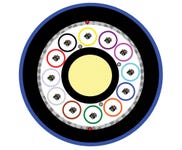 MSS Fibre 12 Core OM1 Loose Tube Blue Nylon Jacketed CableItem Number: CAB-LT-12-MMPackaging Unit: 1 / MetreLoading price...
MSS Fibre 12 Core OM1 Loose Tube Blue Nylon Jacketed CableItem Number: CAB-LT-12-MMPackaging Unit: 1 / MetreLoading price... $5.30
$5.30 -
 MSS Fibre 12 Core OM3 Armoured Loose Tube Blue Nylon Jacketed CableItem Number: CAB-LT-12-MM3CSTPackaging Unit: 1 / MetreLoading price...
MSS Fibre 12 Core OM3 Armoured Loose Tube Blue Nylon Jacketed CableItem Number: CAB-LT-12-MM3CSTPackaging Unit: 1 / MetreLoading price... $7.66
$7.66 -
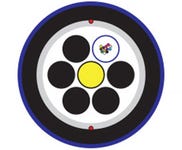 MSS Fibre 12 Core OM3 Loose Tube Blue Nylon Jacketed CableItem Number: CAB-LT-12-MM3Packaging Unit: 1 / MetreLoading price...
MSS Fibre 12 Core OM3 Loose Tube Blue Nylon Jacketed CableItem Number: CAB-LT-12-MM3Packaging Unit: 1 / MetreLoading price... $5.65
$5.65 -
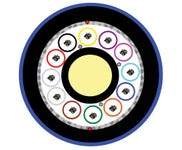 MSS Fibre 12 Core OM3 Mini Loose Tube Blue Nylon Jacketed CableItem Number: CAB-MLT-12-MM3Packaging Unit: 1 / MetreLoading price...
MSS Fibre 12 Core OM3 Mini Loose Tube Blue Nylon Jacketed CableItem Number: CAB-MLT-12-MM3Packaging Unit: 1 / MetreLoading price... $5.49
$5.49 -
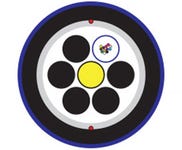 MSS Fibre 12 Core OM4 Loose Tube Blue Nylon Jacketed CableItem Number: CAB-LT-12-MM4Packaging Unit: 1 / MetreLoading price...
MSS Fibre 12 Core OM4 Loose Tube Blue Nylon Jacketed CableItem Number: CAB-LT-12-MM4Packaging Unit: 1 / MetreLoading price... $8.25
$8.25 -
 MSS Fibre 12 Core OM4 Sac Sheath Loose Tube Blue Nylon Jacketed CableItem Number: CAB-LT-12-MM4SSPackaging Unit: 1 / MetreLoading price...
MSS Fibre 12 Core OM4 Sac Sheath Loose Tube Blue Nylon Jacketed CableItem Number: CAB-LT-12-MM4SSPackaging Unit: 1 / MetreLoading price... $7.79
$7.79 -
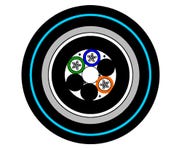 MSS Fibre 12 Core Singlemode Armoured Sac Sheath Loose Tube Blue Nylon Jacketed CableItem Number: CAB-LT-12-SMCSTSSPackaging Unit: 1 / MetreLoading price...
MSS Fibre 12 Core Singlemode Armoured Sac Sheath Loose Tube Blue Nylon Jacketed CableItem Number: CAB-LT-12-SMCSTSSPackaging Unit: 1 / MetreLoading price... $8.08
$8.08 -
 MSS Fibre 12 Core Singlemode CST Armoured Loose Tube Blue Nylon Jacketed CableItem Number: CAB-LT-12-SMCSTPackaging Unit: 1 / MetreLoading price...
MSS Fibre 12 Core Singlemode CST Armoured Loose Tube Blue Nylon Jacketed CableItem Number: CAB-LT-12-SMCSTPackaging Unit: 1 / MetreLoading price... $6.95
$6.95 -
 MSS Fibre 12 Core Singlemode GRP Armoured Loose Tube Blue Nylon Jacketed CableItem Number: CAB-LT-12-SMGRPPackaging Unit: 1 / MetreLoading price...
MSS Fibre 12 Core Singlemode GRP Armoured Loose Tube Blue Nylon Jacketed CableItem Number: CAB-LT-12-SMGRPPackaging Unit: 1 / MetreLoading price... $0.00
$0.00
Buy our Huge Range of Loose Tube Cable Online
What is loose tube fiber optic cable?
Loose tube fiber optic cable is a type of optical fiber cable construction where individual optical fibers are contained within protective tubes that provide flexibility and protection against environmental factors. These tubes are not tightly bound to the fibers, allowing them to move freely within the cable.
Loose tube fiber optic cables are mainly used in outdoor applications, including long-distance telecommunications, internet infrastructure, and other scenarios where the cable may be exposed to different environmental conditions.
Loose tube Cables applications
The main applications of Loose Tube Fiber Optic cables include:
- Long-distance telecommunication - Loose tube cables are frequently used in long-distance telecommunication networks, including undersea cables and terrestrial fiber optic links. The loose tube design protects against environmental factors like temperature variations, moisture, and physical stress.
- Railway and Transportation Networks - Loose tube cables are used for communication systems in railway and transportation networks. They provide high-speed data transmission for signalling, control systems, and communication along railways, highways, and other transportation routes.
- Oil and Gas Industry – These cables are employed in the oil and gas industry for communication and monitoring purposes, both onshore and offshore. They can withstand harsh environmental conditions, including exposure to moisture and extreme temperatures.
- Data Centers - Loose tube cables connect two data centers, providing high-speed and high-bandwidth links for rapid data exchange. Their flexibility and durability make them suitable for routing through conduits and cable trays within data center environments.
- Government and Military Networks - In government and military applications, where secure and high-bandwidth communication is essential, loose tube cables may be used to establish robust and reliable optical networks.
- Campus Networks - Loose tube cables are suitable for connecting different buildings within a university campus, business campus, or industrial facility. They offer the flexibility and durability required for diverse routing scenarios.
Loose tube vs. Tight buffered fiber optic cable
The main differences between loose tube and tight-buffered fiber optic cables are given below:
- Flexibility
- Loose Tube - Loose tube cables are generally more flexible than tight-buffered cables. The loose arrangement of fibers within the tubes allows greater flexibility, making them suitable for applications where the cable may need to bend or twist.
- Tight Buffered - Tight-buffered cables are less flexible due to the tight arrangement of each fiber. However, they are still flexible but may be less suitable for applications requiring frequent bending or twisting.
- Construction
- Loose Tube - In loose tube cables, individual optical fibers are contained within protective, independent tubes. These tubes are not tightly bound to the fibers, allowing them to move freely within the cable.
- Tight Buffered - In tight-buffered cables, each fiber is coated with a layer of buffering material, usually plastic. The fibers are tightly enclosed within this buffer layer, providing a higher level of protection against physical damage.
- Installation
- Loose Tube - Loose tube cables are suitable for installations that require extension over long distances and where the cable may be exposed to external environmental conditions. The flexibility of the design facilitates easier installation in challenging outdoor environments.
- Tight Buffered - Tight-buffered cables are used in shorter-distance installations within buildings or controlled environments. The tighter buffer provides additional protection during handling and termination.
- Termination and Splicing
- Loose Tube - Splicing and terminating loose tube cables require more careful handling due to the independent tubes. You must use specialized equipment and techniques to splice loose tube optical fiber cables.
- Tight Buffered - Termination and splicing of tight-buffered cables are easier because the fibers are individually buffered.
Loose Tube Cable Buying Guide
Factors you need to consider before deciding to buy loose tube cable online:
- Fiber Count - Determine the number of individual fibers needed in the cable. Loose tube cables are available in various fiber counts, and choosing the proper count depends on your network's capacity and scalability requirements.
- Armour and Strength Members - Consider whether additional protection is needed. Some loose tube cables on this website, MSS Data Solutions, come with armoured options for increased mechanical protection, making them suitable for installations where the cable may be exposed to physical stress or rodent damage.
- Outdoor vs. Indoor Use - Select a cable type based on whether it will be used indoors or outdoors. Outdoor cables are designed to withstand environmental factors like moisture, UV radiation, and temperature variations, while indoor cables may focus more on flame-resistant materials.
- Application Requirements - Identify the specific requirements of your application, including the distance you need to extend the cable, environmental conditions, and the desired level of data transmission.
- Installation Flexibility - Determine the cable's flexibility, especially if it needs to navigate through conduits, ducts, or other challenging pathways. The flexibility of loose tube cables is often advantageous in installations where bending or twisting is required.
Buy Loose Tube Cable Online in Australia from MSS Data Solutions
You can check out all types of Loose tube fiber optic cables on our website, MSS Data Solutions. You will get various options here, including 12-core and 24-core OM3/SM Loose Tube Blue Nylon Jacketed Cable. Moreover, you will get 6-core and 72-core single-mode armored Loose Tube Blue Nylon Jacketed Cable as well.
Our website, MSS Data Solutions, has a straightforward user interface, so you can easily buy loose tube cable online from our website, even if you are using it for the first time. We deliver all over Australia, so effortlessly buy loose tube cable online in bulk if you are based in Australia.
Your ordered quantity for this item is more than what we have in stock.
Stock Availability
| Location | |
|---|---|
Please contact us to know more about this item's availability or possible restock dates.
